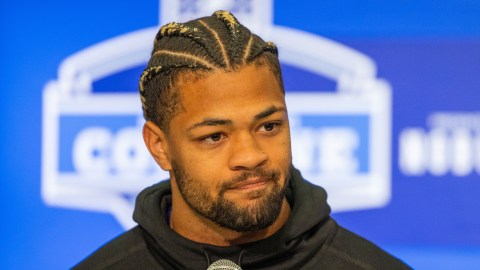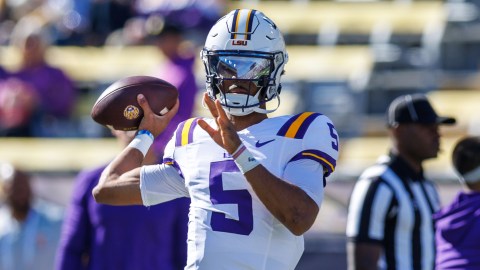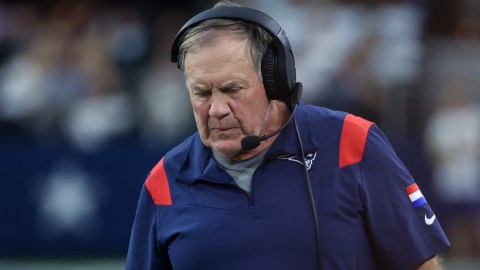BOSTON — Football analysts and fans alike might debate it for generations to come: Should the Seattle Seahawks have passed the ball on the goal line in the final minutes of Super Bowl XLIX against the New England Patriots?
In retrospect, knowing Patriots cornerback Malcolm Butler intercepted Russell Wilson’s pass and sealed New England’s 28-24 win, it’s easy to say the Seahawks should have handed the ball off to star running back Marshawn Lynch. But is it really that simple?
Kroenke Sports & Entertainment director of analytics Sandy Weil, Baltimore Ravens offensive lineman and MIT PhD student John Urschel and ESPN analytics specialist Brian Burke broke it down Saturday at the 2016 MIT Sloan Sports Analytics Conference.
“I think the thing that people always lose track of in that Seahawks game is when they lost the game is when they used two timeouts earlier in that drive,” Weil said. “One after the big long play where they didn’t get down and get ready to run, and then there was another one where they were lined up with like two seconds left, and why didn’t they snap the ball? I don’t know. They must’ve had a reason to not snap the ball, but they wasted two timeouts earlier, and I think that’s where they lost the game. Not on that play.”
Burke ackowledged that Weil’s idea Seattle was doomed even before that play unfolded probably was true, but he still believes the team made the flat-out wrong decision.
“They shouldn’t have passed, and it’s not for the reason anybody thinks,” Burke said. “I agree with that analysis, too, though. So, pass plays results in penalties on the offense far more often, especially on the goal line, than run plays do. And on the goal line, penalties on the offense are asymmetric. If the offense commits a penalty, you’re on the 11, and that is a big difference. Being on the 11 compared to being on the goal line is enormous. … A penalty on the defense only moves the ball six inches.
“I put this situation through my simulator, and it kept coming up saying, yeah, you really don’t want to pass if you can avoid it because of the asymmetry of that — sacks, as well. … Those kinds of tiny little things can make big differences in whether or not you’re the Super Bowl champion, and they often get overlooked.”
Urschel, who has the unique perspective of knowing the numbers and also playing in the NFL, didn’t think the situation was as black and white as Burke. He said regardless of what the numbers tell you, there’s still some strategy involved, for better or for worse.
“There’s certain circumstances in the game where you need to pass the ball with 100 percent likelihood, or you need to run the ball with 100 percent likelihood,” Urschel said. “We’re looking at these discreet outcomes, these realizations of random variables. The truth is, in that decision-making, there’s a distribution.
“You can’t say, he should’ve passed with 100 percent likelihood, or you should’ve run with 100 percent likelihood. There’s a distribution with which you should’ve done each. And this was a realization of that random process that happened to not turn out well. But if we do 1,000 samples of this, who knows what the optimal distribution is?”
Burke noted that his simulator highly preferred the pass play, but Urschel said there can be reason to disregard the numbers.
“There’s a preference, but even with this preference, with this random distribution, sometimes you do the less preferred thing just to keep them off balance,” Urschel said.
Thumbnail photo via Richard Mackson/USA TODAY Sports Images



